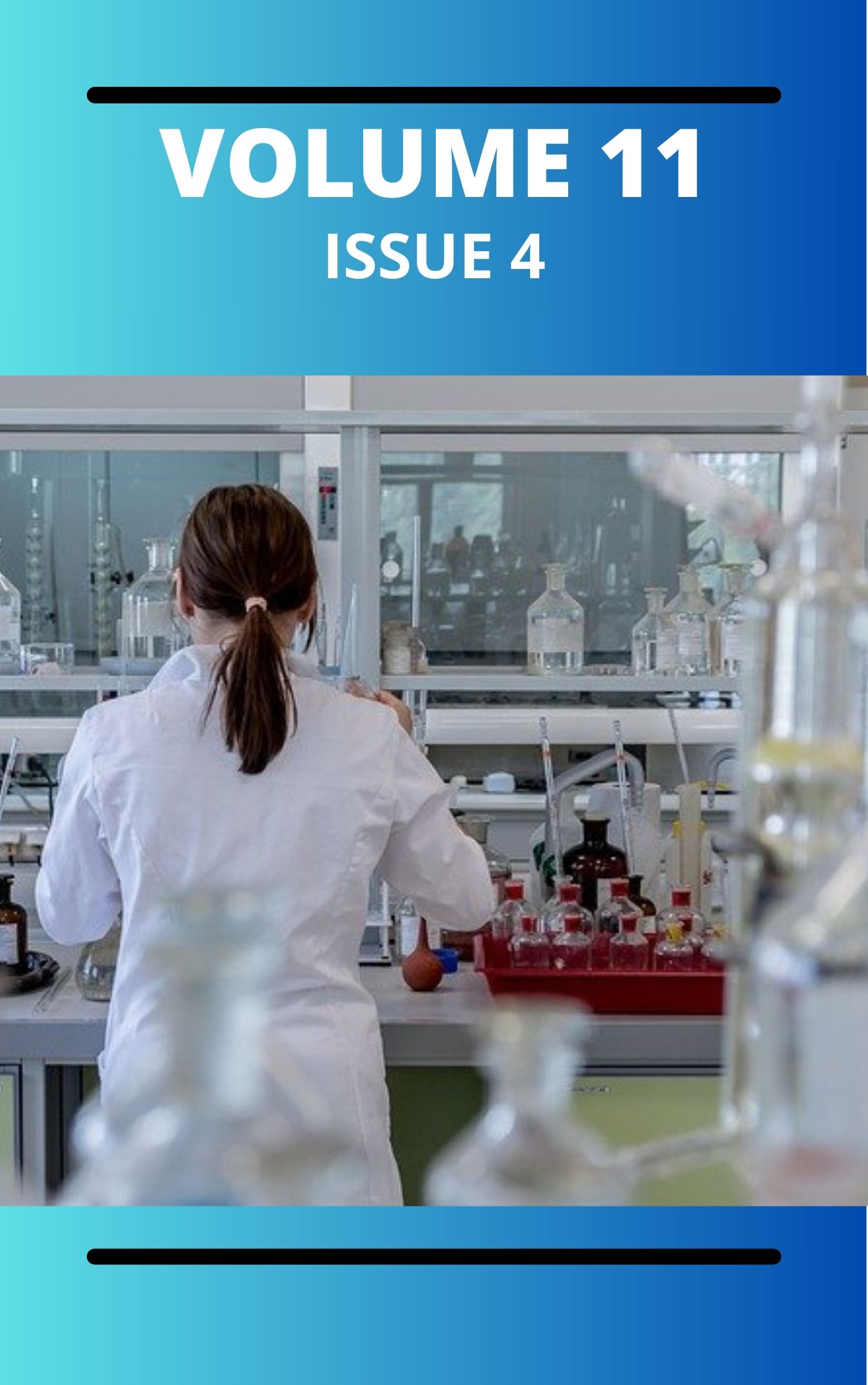Computational Study of the Reaction Mechanism for the Formation of 4,5-Diaminophthalonitrile from 4,5-Dibromo-1,2-Diaminobenzene and Copper Cyanide
DOI:
https://doi.org/10.4314/3fdxhb05Keywords:
Transition state, density functional theory, thermodynamic property, activation barrierAbstract
This study investigates the mechanism of the reaction between 4,5-dibromo-1,2-diaminobenzene and copper cyanide using Density Functional Theory (DFT) calculations. The kinetics and the thermodynamic properties of the reaction were analyzed, revealing two major steps with activated complexes AC1 and AC2. Scheme 3 accurately depicts the reaction pathway. A triangular Cu-C=N moiety was found in the calculated transition states (TS), AC1 and AC2. The thermodynamic parameters for the first step show ΔG = -606.8 kJ mol-1 , ΔH = -610.7 kJ mol-1 and ΔS = -0.0132 kJ mol-1K-1 while for the second step ΔG = -600.1 kJ mol-1, ΔH = -603.6 kJ mol-1, and ΔS = -0.0117 kJ mol-1K-1 were obtained. The activation energies (Ea and Ec) for steps 1 and 2 are 189.0 kJ mol-1 and 210.6 kJ mol-1, respectively. The positive values of and confirm the presence of energy barriers in both steps. These findings provide critical insights into the energetics and mechanism of the DDB reaction with copper cyanide, which is very crucial in understanding the strategy for the development of efficient synthetic procedures for the phthalonitrile.
Downloads
Published
Issue
Section
Similar Articles
- Godwin Okumagbe Aigbadon, Azuka Ocheli, Tope Shade Alege, Esther Onozasi David, Petrological, palynological analysis and Geochemistry of Maastrichtian Patti Shale in some parts of the southern Bida Basin, Nigeria: Implications for provenances and hydrocarbon studies , Communication In Physical Sciences: Vol. 9 No. 3 (2023): VOLUME 9 ISSUE 3
- O. V. Ikpeazu, Ifeanyi E. Otuokere,, K. K. Igwe, Colorimetric Determination of Stability Constant of Acetaminophen-Cu(II) complex by Classical Equation Depending on Stoichiometric Curves , Communication In Physical Sciences: Vol. 5 No. 3 (2020): VOLUME 5 ISSUE 3
- S. A. Odoemelam, Investigation of Adsorption of Tetraoxosulphate (I) ions by Some Agricultural Soils in Akwa Ibom State, South-South igeria , Communication In Physical Sciences: Vol. 5 No. 2 (2020): VOLUME 5 ISSUE 2
- Ivwurie Wisdom, Okorodudu, E.Oghenetega, Assay of Aliphatic Hydrocarbons in Soils from Selected Areas in Ughelli and its Environs, Delta State, Nigeria , Communication In Physical Sciences: Vol. 8 No. 2 (2022): VOLUME 8 ISSUE 2
- B. Myek, M. L. Batari, J. O. Orijajogun, M. A. Aboki, Synthesis and Characterization of Metal Complex of an Azo Dye Based on Acid Orange 7 , Communication In Physical Sciences: Vol. 5 No. 3 (2020): VOLUME 5 ISSUE 3
- Ibrahim Isyaku, Isaac A. Bello, I. G. Ndukwe, I. G. Kizito, Isolation and Characterization of Nonanoic Acid from Ethyl Acetate Extract of Adenodolichos paniculatus (hua) Hutch. & Dalz (Fabaceae) , Communication In Physical Sciences: Vol. 5 No. 3 (2020): VOLUME 5 ISSUE 3
- Alhaji Modu Isa, Aishatu Kaigama, Akeem Ajibola Adepoju, Sule Omeiza Bashiru, Lehmann Type II-Lomax Distribution: Properties and Application to Real Data Set , Communication In Physical Sciences: Vol. 9 No. 1 (2023): VOLUME 9 ISSUE 1
- Onuchi.M. Mac-kalunta, Ahamefula. A. Ahuchaogu, Johnbull O .Echeme, Proximate Analysis, Thin Layer Chromatography Profile and Haematinic Activity of Organic Extracts of Brillantaisia Owariensis Leaves , Communication In Physical Sciences: Vol. 7 No. 4 (2021): VOLUME 7 ISSUE 4
- Habu Tela Abba, Jasini Waida, Busari Kahinde Abdulsemiu, Annual Effective Dose Due to Background Gamma Radiation in Buni Gari, Yobe State , Communication In Physical Sciences: Vol. 10 No. 1 (2023): VOLUME 10 ISSUE 1
- Samuel Omefe, Simbiat Atinuke Lawal, Sakiru Folarin Bello, Adeseun Kafayat Balogun, Itunu Taiwo, Kevin Nnaemeka Ifiora, AI-Augmented Decision Support System for Sustainable Transportation and Supply Chain Management: A Review , Communication In Physical Sciences: Vol. 7 No. 4 (2021): VOLUME 7 ISSUE 4
You may also start an advanced similarity search for this article.




